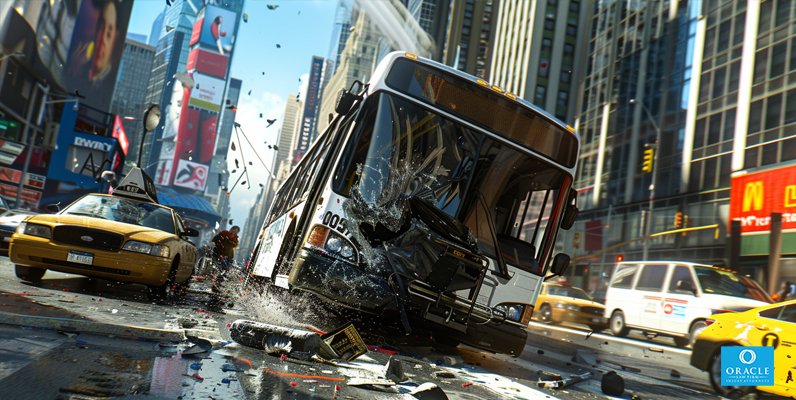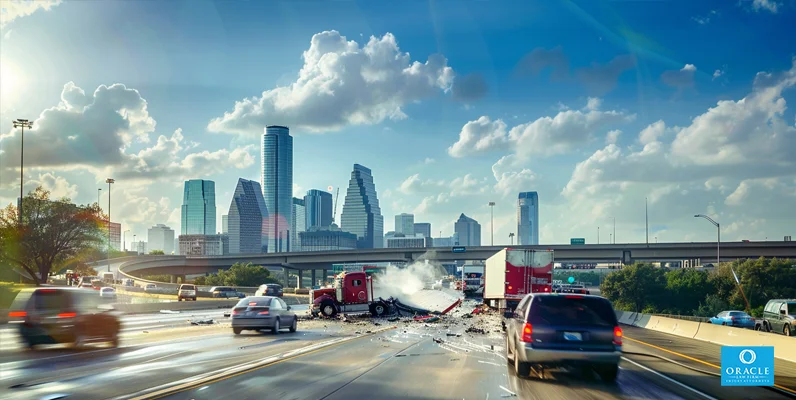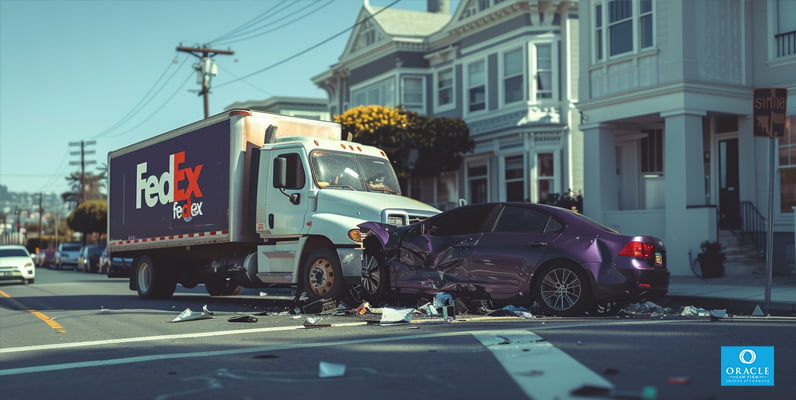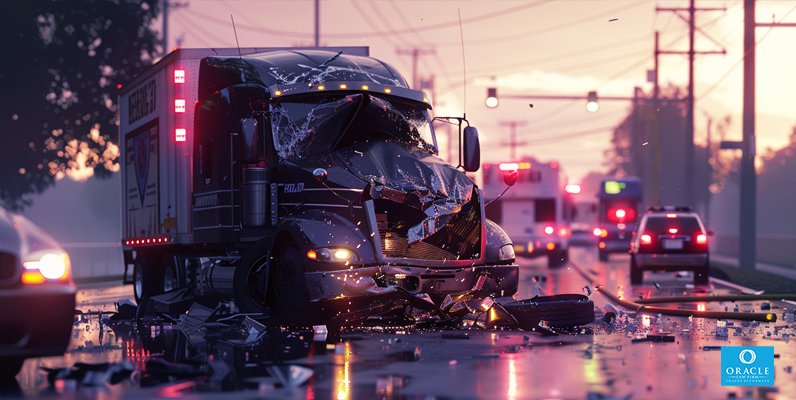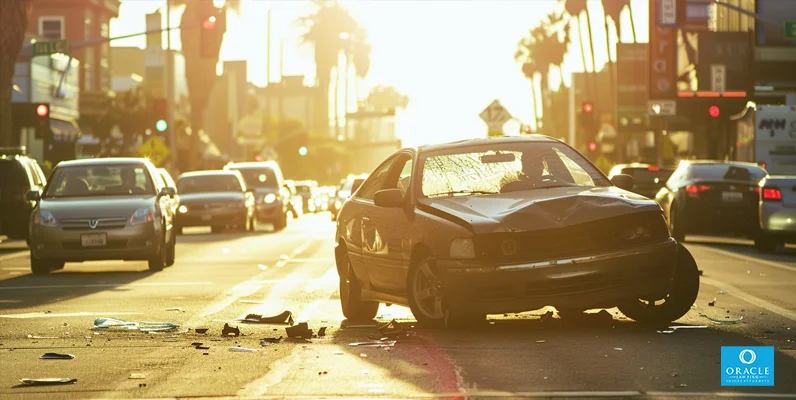Bus accidents occur in various forms and can have devastating consequences. This article categorizes the most common types of bus accidents, detailing scenarios involving school buses, public transit, shuttles, and charters. You’ll learn about the causes behind these incidents and receive actionable advice on prevention. Stay informed and proactive with our concise guide on bus safety.
Key Takeaways
- Bus accidents can be complex and arise from several factors, such as driver error, mechanical failures, and adverse weather or road conditions, with various bus types like school, public transit, shuttle, and charter buses face unique challenges and risks.
- Effective prevention of bus accidents requires a combination of safety feature enhancements, comprehensive driver training, regular vehicle maintenance, and public education and awareness campaigns to reduce the likelihood and impact of accidents.
- The legal aftermath of bus accidents involves determining liability among multiple potential parties, navigating insurance claims, and seeking compensation, with specialized bus accident lawyers playing a critical role in assisting victims.
Identifying Different Types of Bus Accidents
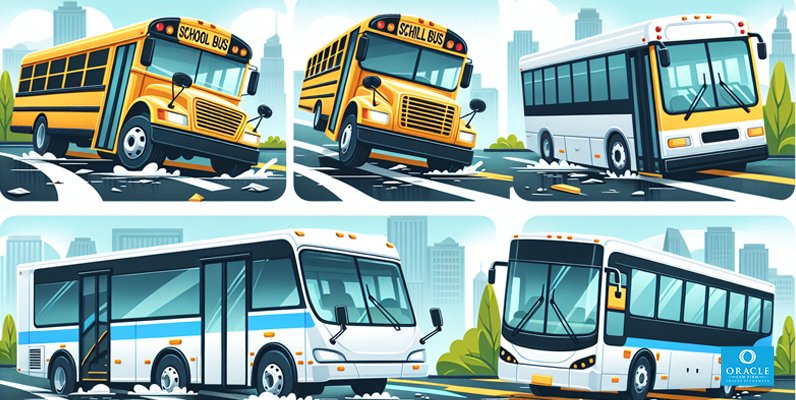
When we consider the broad spectrum of bus accidents, it’s evident that they can vary in nature and severity. From the yellow school buses that carry our youngest citizens to the shuttle buses that navigate airport runways, each type of bus and scenario presents unique risks and challenges. Understanding these differences is key to prevention and preparedness.
We will examine the most common bus accidents types in detail, shedding light on specific scenarios that can result in serious accidents and injuries.
School Bus-Related Incidents
School buses, with their distinctive yellow paint and flashing stop signs, are designed with the safety of children in mind. However, the design that aims to protect can also contribute to vulnerabilities. The large blind spots on school buses pose significant risks, mainly when other drivers are unaware or inattentive to these areas. Despite their robust appearance, many school buses lack seat belts, leaving young passengers at risk in the event of an accident.
When a school bus driver becomes distracted or makes a risky left turn across oncoming traffic, the consequences can be dire for the passengers and other vehicles involved. Moreover, with thousands of injuries sustained annually in school bus accidents, a single school bus accident remains a critical concern for communities across the nation.
Public Transportation Mishaps
Consider the bustling city streets where transit buses serve as the lifelines of urban mobility. These public transportation workhorses are prone to accidents for several reasons, leading to bus accident injuries. Notably, many buses lack seat belts and other essential safety features, increasing the risk of injury for passengers during collisions. Bus-involved accidents can also be attributed to driver fatigue, stemming from extended hours and non-adherence to regulations, leading to lapses in concentration and, ultimately, accidents.
Furthermore, when a mishap occurs with a public bus, seeking compensation becomes complex, tangled in the web of government entity involvement and intricate legal processes.
Shuttle Bus Accidents
Often found at airports, resorts, and event centers, Shuttle buses are not immune to accidents. Their larger size and specific design create significant blind spots, resulting in collisions if other drivers fail to maintain a safe distance. Left-turn crashes are a concern, as the bus’s structure and mirrors can restrict visibility. Additionally, these accidents are frequently exacerbated by the negligent behavior of other drivers, including distractions and failing to yield to shuttle buses’ right-of-way.
Enhancing the safety of shuttle bus operations hinges on training programs focusing on managing these blind spots.
Tour and Charter Bus Crashes
Tour and charter buses, which often traverse long distances and carry travelers to tourist destinations, face their own challenges. The high demand for these services can lead to companies hiring drivers with limited experience, increasing the risk of accidents due to unfamiliarity with the vehicle’s handling and routes. The rigorous schedules these buses endure also call for meticulous maintenance; however, lapses in this area can lead to mechanical failures and, subsequently, accidents.
Regular safety checks, which can be life-saving, prevent issues before they manifest on the open road. Additionally, passengers have a role in their safety by adhering to bus rules and responding appropriately in emergencies.
Factors Contributing to Bus Accidents
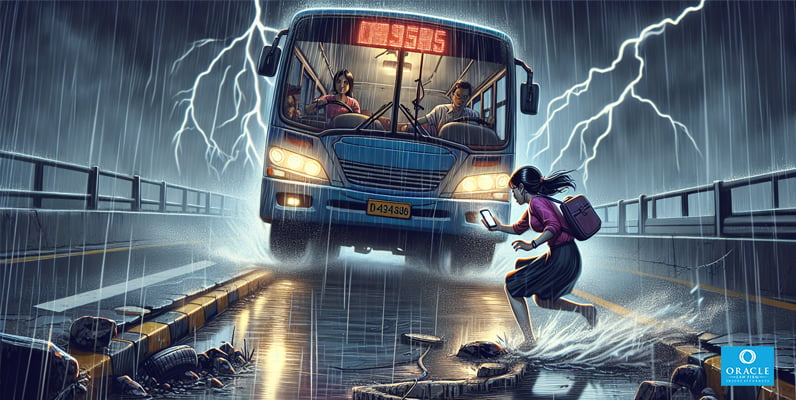
Peeling back the layers of bus accidents reveals an intricate web of contributing factors. These incidents are rarely the result of a single cause but rather a combination of interrelated issues that culminate in a catastrophic event. Bus accidents are complex, from the human element of driver error to the technical aspects of mechanical failures and the unpredictable nature of road and weather conditions.
We will delve into the key factors contributing to these incidents, remembering that knowledge is the first step toward prevention.
Driver Error and Negligence
At the heart of many bus accidents lies driver error and negligence. Some common causes of bus accidents include:
- Distracted driving, such as glancing at electronic devices
- Driving under the influence, which impairs judgment and slows reaction times
- Risky behaviors like speeding or inattention
Bus drivers must maintain a disciplined approach to bus operations to prevent accidents.
Particularly in the case of shuttle bus accidents, driver fatigue and distractions can be primary causes, underscoring the importance of having focused and well-rested drivers.
Mechanical Issues
Beyond the human factor, mechanical issues play a significant role in bus accidents. Regular vehicle inspections and maintenance are critical in identifying and rectifying potential safety issues. Bus fires, often originating in the engine compartment or from tire problems and tire blowouts, are mechanical risks that can lead to loss of control and serious accidents. Ensuring that vehicles are equipped with updated safety features and have a comprehensive emergency evacuation plan can make a difference in preventing accidents.
Despite best efforts, unforeseen mechanical issues can still manifest, underscoring the need for thorough inspections and robust contingency plans for mechanical emergencies.
Road and Weather Conditions
The environment in which buses operate also plays a pivotal role in accident occurrence. Inclement weather conditions, such as heavy rain, snow, and ice, significantly impair visibility and reduce tire traction, heightening the risk of accidents. Weather extremes like hurricanes and blizzards can create flooding and obstructed roads, posing grave dangers to buses.
Moreover, wet or icy roads reduce the friction between tires and the road surface, leading to skidding and loss of control. Poorly maintained or designed roads, riddled with potholes or inadequate lane dimensions, directly contribute to bus accidents, making it imperative for government entities to maintain road safety.
Preventative Measures for Reducing Bus Accidents
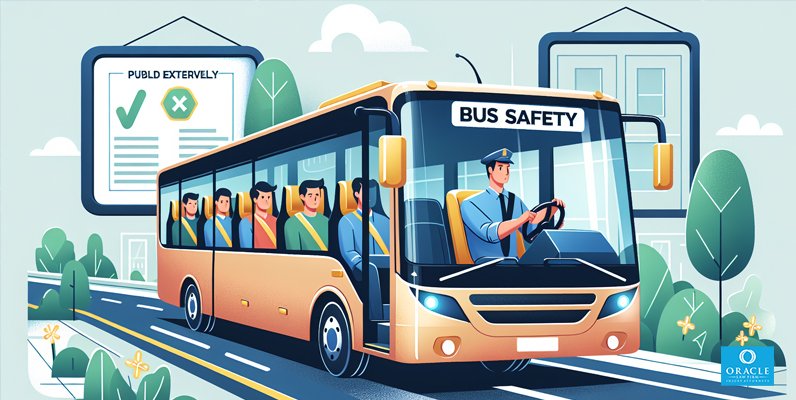
Armed with an understanding of the various types of bus accidents and their contributing factors, we focus on the most crucial aspect: prevention. Implementing a trifecta of enhanced safety features, comprehensive driver training, and public education and awareness can significantly reduce the frequency and severity of bus accidents.
These preventative measures can revolutionize bus safety and foster a safer travel environment when implemented effectively.
Enhanced Safety Features
Technological advancements have paved the way for enhanced safety features in buses. Integrating electronic stability control systems can autonomously correct a vehicle’s path to prevent accidents, especially in challenging driving conditions. Collision mitigation systems, like radar-based and adaptive cruise control, significantly reduce the risk of rear-end collisions, a common type of bus accident.
Visibility can also be improved through systems like the NS PV360® Camera System, which gives drivers a panoramic view of their surroundings, thus aiding in detecting pedestrians and obstacles. Furthermore, telematics solutions enable remote monitoring of driver behavior and critical vehicle functions, enhancing overall bus safety.
Comprehensive Driver Training
Prevention also hinges on the capabilities and preparedness of bus drivers. Rigorous recruitment and continuous training ensure a skilled and prepared driving force capable of handling the unique challenges of bus operation. Maintaining acceptable safety standards requires annual evaluations of driver qualifications, considering their experience and driving records.
Specialized training, emphasizing safe following distances and the longer stopping distances required for buses, further equips drivers to navigate the roads safely. Moreover, using GPS systems to monitor driver behavior can provide consistent feedback and signals when retraining is necessary.
Public Education and Awareness
Complementing technological and training measures, public education, and awareness campaigns are vital in promoting bus safety. Campaigns like the FMCSA’s ‘Our Roads, Our Safety’ and ‘Look Before You Book’ raise awareness about the importance of road safety around large vehicles, including buses.
Sharing real-world experiences from drivers through personal stories and leveraging social media platforms for disseminating safety messages can significantly impact public behavior. These efforts, alongside creating informative materials like infographics, contribute to a safety culture and responsible sharing of the road.
Legal Considerations and Compensation for Bus Accident Victims
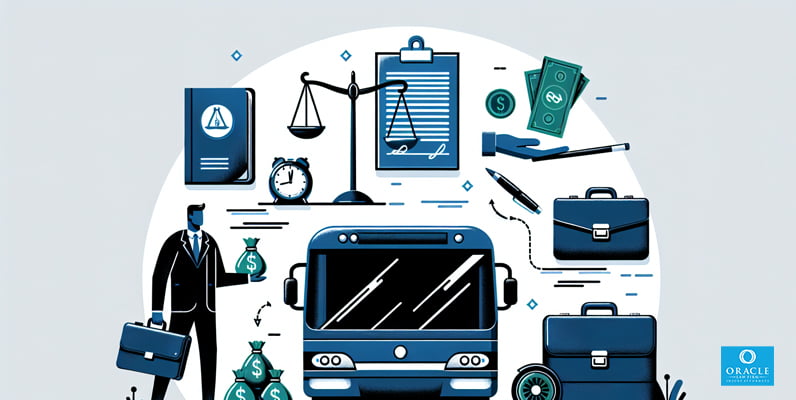
Navigating the aftermath of a bus accident can be as complex as the accident itself. Victims face a maze of legal considerations, including:
- Determining liability
- Securing compensation for their injuries
- Understanding the role of bus accident lawyers
- Dealing with insurance claims and settlements
Understanding these intricacies is paramount for victims of post-traumatic stress disorder seeking justice and financial recovery.
We will now explore the legal avenues available to bus accident victims, guiding how to navigate the complex process of securing compensation.
Determining Liability
Determining liability in bus accidents often involves a complex mix of multiple parties. Various actors, from the bus company to individual drivers, school districts, and government entities, may share responsibility for the incident. Victims may seek compensation from bus drivers and bus companies due to negligence, with shared liability particularly common in chartered tour bus cases.
Government entities may also be held liable for unsafe road conditions or failure to maintain safety standards when public buses are involved.
Insurance Claims and Settlements
The pursuit of compensation typically begins with an insurance claim, which can provide immediate benefits regardless of who is at fault through Personal Injury Protection (PIP) coverage. Submitting evidence and engaging legal assistance is pivotal in securing fair compensation from insurance companies.
For severe injuries or damages not covered by PIP, victims may need to pursue a fault-based claim against the responsible party’s insurance provider to secure the necessary compensation. Settlement calculations consider medical expenses, the type of care required, and any lost wages due to the accident.
The Role of a Bus Accident Lawyer
Bus accident lawyers specialize in guiding victims through the complexities of a bus accident injury claim and securing fair compensation for sustained injuries. These legal professionals handle:
- Communications
- Evidence collection
- Settlement negotiations
- Court representation, if necessary
Many offer free case evaluations and work on a contingency fee basis, only receiving payment if compensation is awarded to the victim.
Their expertise is crucial in accurately calculating and negotiating compensation for medical bills, lost wages, and pain and suffering damages.
Summary
Bus accidents encompass a range of incidents that can be as diverse as the buses themselves. From school bus accidents to public transit and charter bus crashes, understanding the common types and contributing factors is essential for prevention and management. Implementing safety measures, investing in driver training, and raising public awareness are pivotal in reducing accidents. For those affected, navigating legal processes and seeking compensation are critical steps toward recovery. This comprehensive guide serves as a roadmap for understanding bus accidents and underscores the collective responsibility of society to ensure the safety of these vital modes of transportation.
Frequently Asked Questions
What are the most common types of school bus accidents?
The most common type of school bus accident is a rear-end collision, often caused by tailgating or distracted driving. This type of accident typically involves two vehicles, one striking the school bus from behind.
What are the most common injuries for bus drivers?
The most common injuries for bus drivers include slip, trip, and fall accidents, lower back pain from strong engine vibrations and sitting for long periods, and shoulder, wrist, and elbow trauma from setting and releasing brakes.
What was the most deadliest bus crashes?
The deadliest bus accident in the U.S. occurred on September 17, 1963 when an oncoming train collided with a makeshift “bus,” a flatbed truck equipped with benches and a canopy.
What are the three general types of accidents?
The three general types of accidents are head-on collisions, rear-end collisions, and side-impact accidents. Head-on collisions typically occur when a vehicle travels the wrong way down a one-way street or crosses the median on a highway.
How can we prevent bus accidents?
To prevent bus accidents, investing in enhanced safety features like electronic stability control and collision avoidance technologies is essential, as implementing comprehensive driver training programs and running public education campaigns to promote road safety is essential. This multifaceted approach can significantly reduce the risk of bus accidents.
